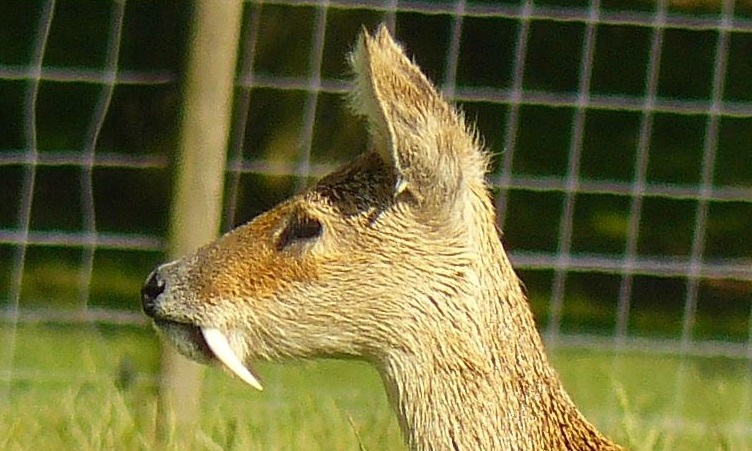|
Pareques Iwamotoi
The blackbar drum (''Pareques iwamotoi'') is a species of marine ray-finned fish belonging to the genus ''Pareques'' in the family Sciaenidae, the drums and croakers. It is found in the western Atlantic Ocean. Taxonomy The blackbar drum was first formally described in 1988 by the American ichthyologists George C. Miller and Loren P. Woods with its type locality given as at a depth of at Oregon Station 698 () south of Pensacola, Florida, in the United States. The genus ''Pareques'' is included in the subfamily Sciaeninae by some authors, but the 5th edition of ''Fishes of the World'' does not recognise subfamilies within Sciaenidae, which it places in the order Acanthuriformes. Etymology The blackbar drum's specific name honors Tomio Iwamoto of the California Academy of Sciences, who Miller and Woods described as a "good friend" and who participated in the expedition on which the type specimen was collected. Description The blackbar drum has a deep, rhomboid body with an arc ... [...More Info...] [...Related Items...] OR: [Wikipedia] [Google] [Baidu] |
George C
George may refer to: People * George (given name) * George (surname) * George (singer), American-Canadian singer George Nozuka, known by the mononym George * George Washington, First President of the United States * George W. Bush, 43rd President of the United States * George H. W. Bush, 41st President of the United States * George V, King of Great Britain, Ireland, the British Dominions and Emperor of India from 1910-1936 * George VI, King of Great Britain, Ireland, the British Dominions and Emperor of India from 1936-1952 * Prince George of Wales * George Papagheorghe also known as Jorge / GEØRGE * George, stage name of Giorgio Moroder * George Harrison, an English musician and singer-songwriter Places South Africa * George, Western Cape ** George Airport United States * George, Iowa * George, Missouri * George, Washington * George County, Mississippi * George Air Force Base, a former U.S. Air Force base located in California Characters * George (Peppa Pig), a 2- ... [...More Info...] [...Related Items...] OR: [Wikipedia] [Google] [Baidu] |
Tomio Iwamoto
Tomio is a masculine Japanese given name. Possible writings Tomio can be written using different combinations of kanji characters. Some examples: *富雄, "enrich, masculine" *富男, "enrich, man" *富夫, "enrich, husband" *冨雄, "enrich, masculine" *冨男, "enrich, man" *冨夫, "enrich, husband" *斗巳雄, "Big Dipper, sign of the snake (Chinese zodiac), masculine" The name can also be written in hiragana とみお or katakana トミオ. Notable people with the name * , Japanese film actor * , Japanese historian * , Japanese sprinter * , Japanese karateka * , Japanese photographer * , Japanese diver * , Japanese mathematician * , Japanese professor at Osaka University * , Japanese educator * , American businessman *, Japanese rower * , Czech-Japanese politician and entrepreneur *, Japanese cross-country skier * , Japanese triple jumper * , Japanese alpine skier * , Japanese sprint canoer * , Japanese baseball player *, Japanese ice hockey player Places *Tomio Building ... [...More Info...] [...Related Items...] OR: [Wikipedia] [Google] [Baidu] |
Gulf Of Mexico
The Gulf of Mexico ( es, Golfo de México) is an ocean basin and a marginal sea of the Atlantic Ocean, largely surrounded by the North American continent. It is bounded on the northeast, north and northwest by the Gulf Coast of the United States; on the southwest and south by the Mexican states of Tamaulipas, Veracruz, Tabasco, Campeche, Yucatan, and Quintana Roo; and on the southeast by Cuba. The Southern U.S. states of Texas, Louisiana, Mississippi, Alabama, and Florida, which border the Gulf on the north, are often referred to as the " Third Coast" of the United States (in addition to its Atlantic and Pacific coasts). The Gulf of Mexico took shape approximately 300 million years ago as a result of plate tectonics.Huerta, A.D., and D.L. Harry (2012) ''Wilson cycles, tectonic inheritance, and rifting of the North American Gulf of Mexico continental margin.'' Geosphere. 8(1):GES00725.1, first published on March 6, 2012, The Gulf of Mexico basin is roughly ov ... [...More Info...] [...Related Items...] OR: [Wikipedia] [Google] [Baidu] |
Smithsonian Tropical Research Institute
The Smithsonian Tropical Research Institute (STRI, es, Instituto Smithsonian de Investigaciones Tropicales) is located in Panama and is the only bureau of the Smithsonian Institution based outside of the United States. It is dedicated to understanding the past, present, and future of tropical ecosystems and their relevance to human welfare. STRI grew out of a small field station established in 1923 on Barro Colorado Island in the Panama Canal Zone to become one of the world's leading tropical research organizations. STRI's facilities provide for long-term ecological studies in the tropics and are used by some 1,200 visiting scientists from academic and research institutions around the world every year. History Smithsonian scientists first came to Panama during the construction of the Panama Canal from 1904 to 1914. The Secretary of the Smithsonian Institution, Charles Doolittle Walcott, reached an agreement with Federico Boyd to conduct a biological inventory of the new Canal ... [...More Info...] [...Related Items...] OR: [Wikipedia] [Google] [Baidu] |
Pelvic Fin
Pelvic fins or ventral fins are paired fins located on the ventral surface of fish. The paired pelvic fins are homologous to the hindlimbs of tetrapods. Structure and function Structure In actinopterygians, the pelvic fin consists of two endochondrally-derived bony girdles attached to bony radials. Dermal fin rays ( lepidotrichia) are positioned distally from the radials. There are three pairs of muscles each on the dorsal and ventral side of the pelvic fin girdle that abduct and adduct the fin from the body. Pelvic fin structures can be extremely specialized in actinopterygians. Gobiids and lumpsuckers modify their pelvic fins into a sucker disk that allow them to adhere to the substrate or climb structures, such as waterfalls. In priapiumfish, males have modified their pelvic structures into a spiny copulatory device that grasps the female during mating. File:Pelvic fin skeleton.png, Pelvic fin skeleton for ''Danio rerio'', zebrafish. File:Zuignap waarmee de zwartbek ... [...More Info...] [...Related Items...] OR: [Wikipedia] [Google] [Baidu] |
Total Length
Fish measurement is the measuring of individual fish and various parts of their anatomies. These data are used in many areas of ichthyology, including taxonomy and fisheries biology. Overall length * Standard length (SL) is the length of a fish measured from the tip of the snout to the posterior end of the last vertebra or to the posterior end of the midlateral portion of the hypural plate. Simply put, this measurement excludes the length of the caudal (tail) fin. * Total length (TL) is the length of a fish measured from the tip of the snout to the tip of the longer lobe of the caudal fin, usually measured with the lobes compressed along the midline. It is a straight-line measure, not measured over the curve of the body. Standard length measurements are used with Teleostei (most bony fish), while total length measurements are used with Myxini ( hagfish), Petromyzontiformes ( lampreys), and (usually) Elasmobranchii (sharks and rays), as well as some other fishes. Total leng ... [...More Info...] [...Related Items...] OR: [Wikipedia] [Google] [Baidu] |
Cycloid Scale
A fish scale is a small rigid plate that grows out of the skin of a fish. The skin of most jawed fishes is covered with these protective scales, which can also provide effective camouflage through the use of reflection and colouration, as well as possible hydrodynamic advantages. The term ''scale'' derives from the Old French , meaning a shell pod or husk. Scales vary enormously in size, shape, structure, and extent, ranging from strong and rigid armour plates in fishes such as shrimpfishes and boxfishes, to microscopic or absent in fishes such as eels and anglerfishes. The morphology of a scale can be used to identify the species of fish it came from. Scales originated within the jawless ostracoderms, ancestors to all jawed fishes today. Most bony fishes are covered with the cycloid scales of salmon and carp, or the ctenoid scales of perch, or the ganoid scales of sturgeons and gars. Cartilaginous fishes (sharks and rays) are covered with placoid scales. Some speci ... [...More Info...] [...Related Items...] OR: [Wikipedia] [Google] [Baidu] |
Anal Fin
Fins are distinctive anatomical features composed of bony spines or rays protruding from the body of a fish. They are covered with skin and joined together either in a webbed fashion, as seen in most bony fish, or similar to a flipper, as seen in sharks. Apart from the tail or caudal fin, fish fins have no direct connection with the spine and are supported only by muscles. Their principal function is to help the fish swim. Fins located in different places on the fish serve different purposes such as moving forward, turning, keeping an upright position or stopping. Most fish use fins when swimming, flying fish use pectoral fins for gliding, and frogfish use them for crawling. Fins can also be used for other purposes; male sharks and mosquitofish use a modified fin to deliver sperm, thresher sharks use their caudal fin to stun prey, reef stonefish have spines in their dorsal fins that inject venom, anglerfish use the first spine of their dorsal fin like a fishing rod to ... [...More Info...] [...Related Items...] OR: [Wikipedia] [Google] [Baidu] |
Preoperculum
This glossary of ichthyology is a list of definitions of terms and concepts used in ichthyology, the study of fishes. A B C D E F G H I J K L M N O P R S T U V W {{glossaryend * Fishkeeping Ichthyology Ichthyology is the branch of zoology devoted to the study of fish, including bony fish ( Osteichthyes), cartilaginous fish (Chondrichthyes), and ja ... [...More Info...] [...Related Items...] OR: [Wikipedia] [Google] [Baidu] |
Barbel (anatomy)
In fish anatomy and turtle anatomy, a barbel is a slender, whiskerlike sensory organ near the mouth. Fish that have barbels include the catfish, the carp, the goatfish, the hagfish, the sturgeon, the zebrafish, the black dragonfish and some species of shark such as the sawshark. Barbels house the taste buds of such fish and are used to search for food Food is any substance consumed by an organism for nutritional support. Food is usually of plant, animal, or fungal origin, and contains essential nutrients, such as carbohydrates, fats, proteins, vitamins, or minerals. The substance is ... in murky water. The word "barbel" comes from the Middle Latin ''barbula'', for "little beard." Barbels are sometimes erroneously referred to as '' barbs'', which are found in bird feathers for flight. Barbels may be located in a variety of locations on the head of a fish. "Maxillary barbels" refers to barbels on either side of the mouth. Barbels may also be nasal, exten ... [...More Info...] [...Related Items...] OR: [Wikipedia] [Google] [Baidu] |
Canine Teeth
In mammalian oral anatomy, the canine teeth, also called cuspids, dog teeth, or (in the context of the upper jaw) fangs, eye teeth, vampire teeth, or vampire fangs, are the relatively long, pointed teeth. They can appear more flattened however, causing them to resemble incisors and leading them to be called ''incisiform''. They developed and are used primarily for firmly holding food in order to tear it apart, and occasionally as weapons. They are often the largest teeth in a mammal's mouth. Individuals of most species that develop them normally have four, two in the upper jaw and two in the lower, separated within each jaw by incisors; humans and dogs are examples. In most species, canines are the anterior-most teeth in the maxilla The maxilla (plural: ''maxillae'' ) in vertebrates is the upper fixed (not fixed in Neopterygii) bone of the jaw formed from the fusion of two maxillary bones. In humans, the upper jaw includes the hard palate in the front of the mouth. The ... [...More Info...] [...Related Items...] OR: [Wikipedia] [Google] [Baidu] |




.png)
